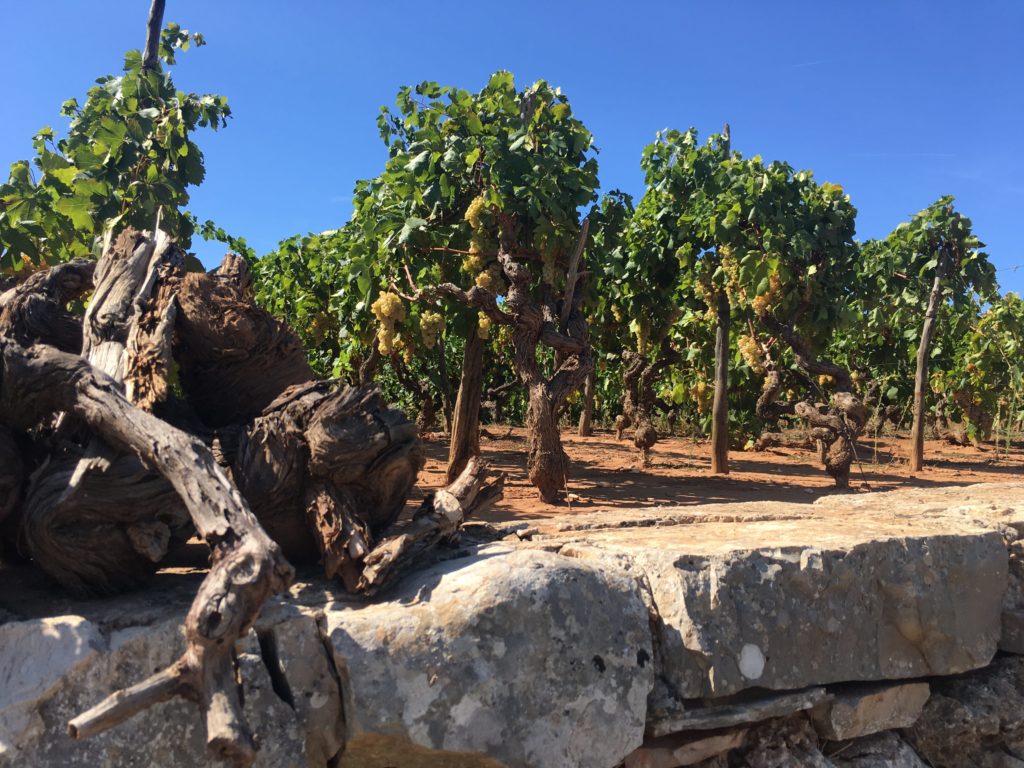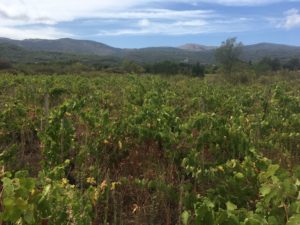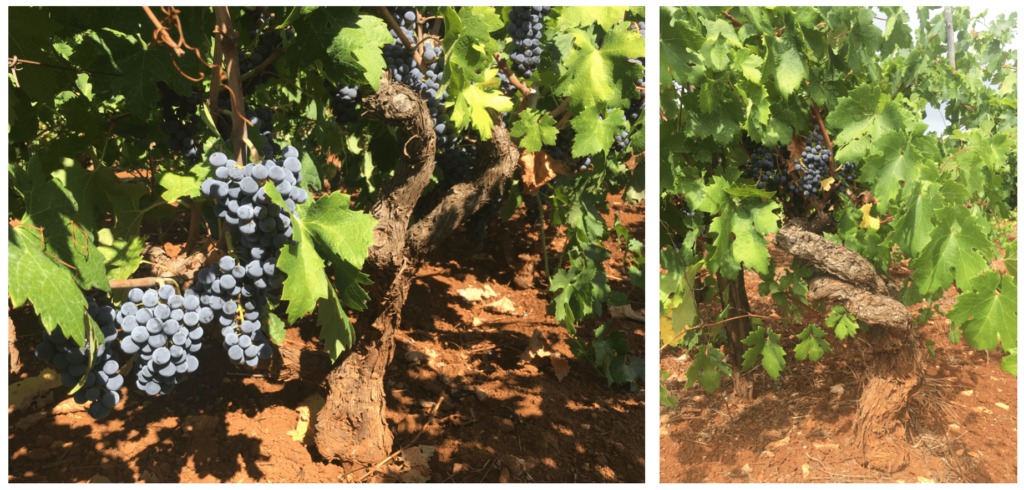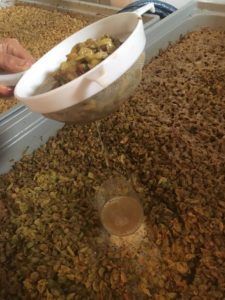The crumbling stone walls, first laid some 2400 years ago, stand at complete odds with the budget airline jumbo jets flying overhead. Hvar may be a party destination to some, but there’s a completely different side to this Croatian island – one which has remained almost completely unchanged since 400 BC. Hvar is home to the Stari Grad Plain – the oldest continually-cultivated vineyard in the world. Originally planted by the ancient Greeks, this fertile valley is filled with hundreds of small, old vineyards, each separated by picturesque stone walls, in the same way that they have been for over two millennia. It’s no wonder UNESCO declared the Stari Grad wine region a world heritage site, this is a patrimony worth protecting.
Spread over 80 hectares, the individual lots have been used for fruit, olives and other staples of Adriatic life for the many different peoples and tribes who have inhabited the island: the ancient Greeks, the Romans, the Venetians, the Hungarians, the French, the Austrians, the Italians, the Yugoslavs… The vines and their cobbled-together stone walls bring more consistency to this landscape than any of the great empires that have ruled here. It’s the oldest continually-cultivated wine region in the world, with vines that have been harvested each year, through good times and bad.

Well-maintained old vines in the Stari Grad
That doesn’t mean that there aren’t any abandoned vineyards though – there are dozens of them. You would think that with such a wealth of old vines, winemakers would be chomping at the bit in order to have a crack at making Stari Grad wine from these ancient native varieties. In fact, there are surprisingly few.

Abandoned vineyards in the Stari Grad
While there are hundreds of growers – or vineyard owners – on the island, the majority of the fruit goes into garage wines made in the owners’ homes. The rest is sold to wineries or winemakers with commercial production. Making wine here isn’t a financial cinch – grapes on Hvar are not cheap… “I have to pay around USD $2400 a tonne for my Plavac Mali,” says Jo Ahearne, a British Master of Wine who fell in love with the vine heritage and wine potential of Hvar and started making her own wines here in 2014, buying fruit from several growers. To put that into perspective, the average price for Californian wine grapes is USD $750 per tonne – less than a third of the price. And these are little-known native varieties from a little-known wine region in the little-known country of Croatia. Why so expensive?
“Basically, everyone’s vineyard is so small that they will either charge a high price, or just not bother to harvest,” explains Jo, pointing towards the multitude of abandoned vines that are covered in weeds and flowers. Whether someone is harvesting that year or not, the ancient, twisted trunks of vines still produce grapes each year – as they have for eons.
Hvar wines are an investment, not only for the producer, but for the drinker too – don’t expect to pay less than €10 a bottle for even the simplest of wine styles. When you do, however, invest in Hvar grapes and wines, it can offer you a fairy-tale experience (and unfortunately some nightmarish ones too…)
Stari Grad wine: Plavac Mali
Hvar is home to Plavac Mali, a grape native to the island. It translates as ‘little blue’ because of its bright blue, small berries and is a relative of Zinfandel. Plavac Mali, like Zinfandel, has a propensity to high alcohol and fruit-bomb wines. Coming from the region with the most sunshine hours in Europe, it’s no wonder that these wines creep well over 15% abv some vintages. But the abundant berry fruit notes and racy tannins suit the style and, as a grape which actually struggles to ripen – even under the 35°C summer sunshine -, this is clearly the best place for it.

Plavac Mali, aka ‘little blue’
Viticulture, though, isn’t limited to the Stari Grad Plain. While the Plain (known locally as the Ager) – effectively the valley floor – is the most fertile, warmest site, vines are found all over the island. While some vines can be found at the dizzying heights of Mount Sveti Nikola, 628m above sea level, others are dotted on the steep slopes, and some are almost at the water’s edge. Plavac wines can range from a muscular beast which could rugby-tackle even the toughest young Nebbiolos through to a pretty, floral wine with Pinot Noir-like femininity.
Defining which sites produce which character of Plavac is still a work in progress. This may be a region with millennia of vine-growing history but any documentation or learned appreciation has been ravaged by countless wars, some so recent they are still within living memory. However, the old vineyards and deep roots hold the key and a handful of curious winemakers are focusing on the region, promising an exciting range of single-vineyard Plavac Mali in the near future.
Hvar & Stari Grad wine: native grape varieties
There are of course other native varieties here ripe for discovery:

Making Pošip orange
- Bogdanuša – a dry, fresh white variety. It might sound fairly unglamorous in English, but it actually means “given by God”;
- Pošip – a widely grown white variety, which is technically native to the nearby island Korčula. This produces wines with medium to full body and has aromas ranging from stone fruit to tropical notes sometimes with a wild herbal character. It can also makeexcellent orange wines;
- Prč – again, not very sexy-sounding, but Prč – or Parč if you prefer – has rather high sugar and low acidity, making it best suited to the local straw wine, known as prošek;
- Darnekuša – a red most suitable for rosé. It’s high acidity, low alcohol and light colour work well with the fresh red fruit and wild herb nose.
The plantations of these varieties, and indeed Hvar, fall within the minutiae of wine production today. Hvar’s vineyards went from 5,700 hectares in its heydey to less than 350 today. However, this modest contribution to the world of wine is a seed that was planted long, long ago… The island is undoubtedly a lynchpin of native Croatian varieties and viticultural patrimony. Small it may be, but the viticultural foundations of Hvar are well built and the vines run deep.
Other Croatian wine guide articles:
- Guide to Istria’s wines (and food!)
- A wine lover’s guide to visiting Croatia
- The flavours of Pag island
- 101 on Istrian climate
- Six Croatian grape varieties to try
- Tomic winery and native Hvar varieties
- Importing Croatian wine into the UK
- Istrian terroir with Bruno Trapan
- All Croatian articles

